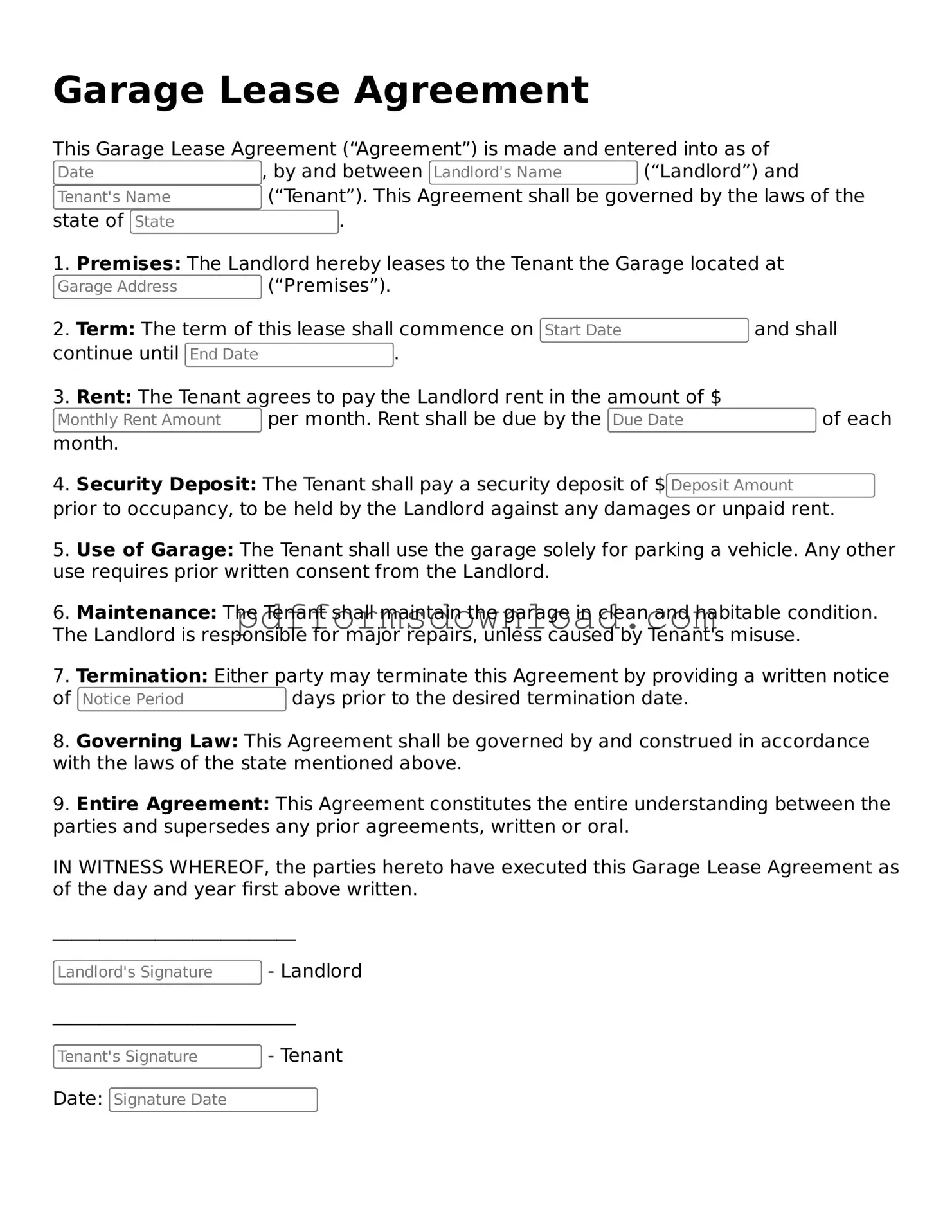What is a Garage Lease Agreement?
A Garage Lease Agreement is a legal document that outlines the terms and conditions for renting a garage space. It specifies the responsibilities of both the landlord and the tenant, including payment details, duration of the lease, and rules regarding the use of the garage.
Who needs a Garage Lease Agreement?
Anyone looking to rent out a garage or lease a garage space should use this agreement. This includes homeowners renting out their garage for storage or individuals seeking a space to park their vehicle securely.
What information is included in a Garage Lease Agreement?
The agreement typically includes the names of the parties involved, the address of the garage, rental amount, payment schedule, lease duration, and any specific rules regarding the use of the garage. It may also cover maintenance responsibilities and conditions for terminating the lease.
How long does a Garage Lease Agreement last?
The duration of the lease can vary. It can be a fixed term, such as six months or a year, or it can be month-to-month. The specific duration should be clearly stated in the agreement.
What happens if I need to terminate the lease early?
If you need to terminate the lease early, check the agreement for any clauses regarding early termination. Typically, a notice period is required, and there may be penalties or conditions that apply. Communication with the other party is crucial in these situations.
Are there any restrictions on what I can store in the garage?
Yes, most Garage Lease Agreements include restrictions on what can be stored. Common prohibitions include hazardous materials, flammable substances, or anything that could cause damage to the property. Always review these restrictions before signing.
Can I sublease the garage space?
Subleasing may be allowed, but it usually requires the landlord's approval. The original lease agreement should clarify this. If subleasing is permitted, ensure that the new tenant understands the terms of the original agreement.
What should I do if there are maintenance issues with the garage?
Report any maintenance issues to the landlord as soon as possible. The agreement should outline who is responsible for repairs and maintenance. Typically, the landlord handles structural issues, while the tenant may be responsible for minor upkeep.
Is a Garage Lease Agreement legally binding?
Yes, once both parties sign the agreement, it becomes legally binding. This means that both the landlord and tenant are obligated to follow the terms outlined in the document. If disputes arise, the agreement can be referenced in legal proceedings.
Can I make changes to the Garage Lease Agreement after it is signed?
Changes can be made, but both parties must agree to them. Any amendments should be documented in writing and signed by both the landlord and tenant to ensure clarity and enforceability.
